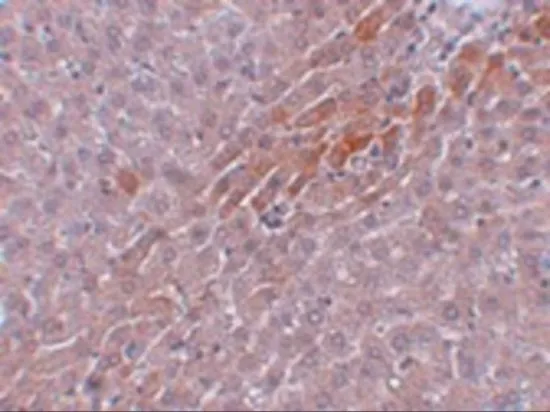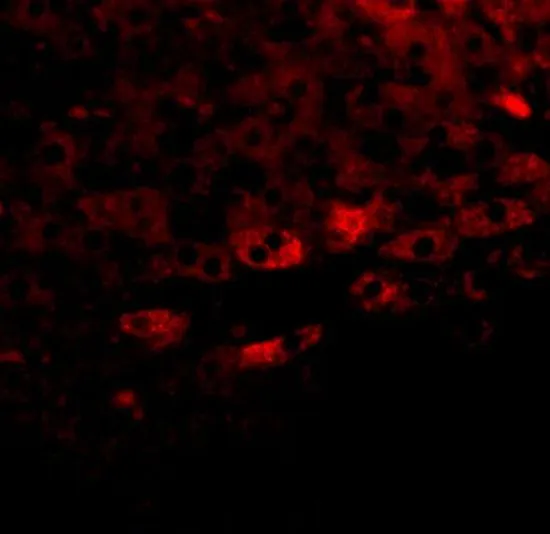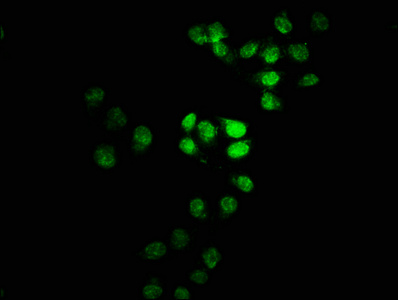
IHC-P analysis of rat liver tissue using GTX85248 TBKBP1 antibody. Working concentration : 5 microg/ml
TBKBP1 antibody
GTX85248
ApplicationsWestern Blot, ELISA, ImmunoHistoChemistry, ImmunoHistoChemistry Paraffin
Product group Antibodies
TargetTBKBP1
Overview
- SupplierGeneTex
- Product NameTBKBP1 antibody
- Delivery Days Customer9
- Application Supplier NoteWB: 1 microg/mL. IHC-P: 5 microg/mL. *Optimal dilutions/concentrations should be determined by the researcher.Not tested in other applications.
- ApplicationsWestern Blot, ELISA, ImmunoHistoChemistry, ImmunoHistoChemistry Paraffin
- CertificationResearch Use Only
- ClonalityPolyclonal
- Concentration1 mg/ml
- ConjugateUnconjugated
- Gene ID9755
- Target nameTBKBP1
- Target descriptionTBK1 binding protein 1
- Target synonymsProSAPiP2, SINTBAD, TANK-binding kinase 1-binding protein 1
- HostRabbit
- IsotypeIgG
- Protein IDA7MCY6
- Protein NameTANK-binding kinase 1-binding protein 1
- Scientific DescriptionProsapip2 (TBKBP1) is essential for signal transduction during viral infection thus plays a major role in the TNF/NF-kappaB pathway. It is an adaptor protein that constitutively binds TBK1 (TANK-binding kinase) and IKBKE and may play a role in antiviral innate immunity. Prosapip2 is a 615 amino acid adaptor protein belonging to the fibrillar collagen family, consisting of trimers of identical alpha 1 chains which are linked to each other by interchain disulfide bonds. It has a ubiquitous expression with highest levels in ovary, followed by the neuronal system. Prosapip2 binds to TBK1 and helps in the activation of IRF3 which controls the expression of antiviral genes during infection. Recent studies show that Prosapip2 is an interaction partner of ProSAP2/Shank3 and actin, suggesting a role as a linker molecule between postsynaptic density and the cytoskeleton.
- Storage Instruction-20°C or -80°C,2°C to 8°C
- UNSPSC12352203






